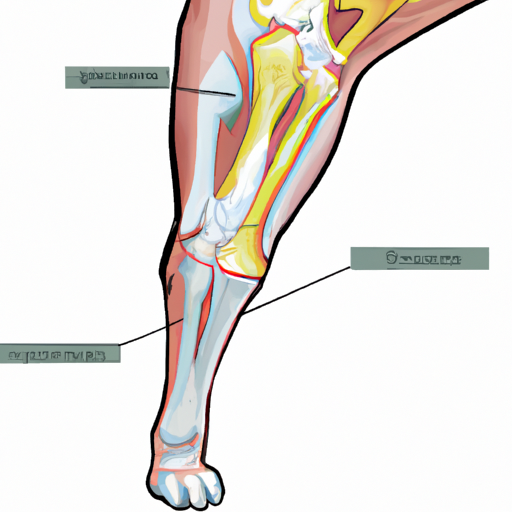Hello, dear caregiver. The health and happiness of your furry friend is undoubtedly one of your top priorities. One common concern that you might have is regarding your dog’s Anterior Cruciate Ligament, often referred to as the ACL. This guide will help you understand where you can find your dog’s ACL, why it matters, and how you can protect it.
H2: The Anatomy of a Dog’s Leg
Just like human beings, dogs have a complex structure of bones, muscles, and ligaments in their legs. The ACL, or Anterior Cruciate Ligament, is one of the most crucial components of this structure.
- Bones: The dog’s leg comprises three main bones – femur (thigh bone), tibia (shin bone), and fibula (smaller bone next to the tibia).
- Joints: These bones are connected by joints – the hip, knee, and hock (the dog’s ankle).
- Ligaments: Ligaments are fibrous tissues that connect bones to other bones. The ACL is one such ligament, located in the knee joint.
The ACL, in particular, is located within the knee joint, connecting the femur and tibia. It is responsible for stabilizing the joint and allowing your dog to move, run, and play comfortably.
| Bone | Joint | Ligament |
|---|---|---|
| Femur | Hip | ACL |
| Tibia | Knee | |
| Fibula | Hock |
H2: The Role of the ACL in a Dog’s Mobility
The Anterior Cruciate Ligament plays a crucial role in your dog’s mobility. It stabilizes the knee joint, preventing the tibia from sliding forward under the femur.
When your dog is running, jumping, or merely walking around, it’s the ACL that ensures smooth and coordinated movements. Without a healthy ACL, your dog could experience pain, stiffness, and mobility issues.
H2: Common ACL Injuries in Dogs
Unfortunately, ACL injuries are quite common in dogs. These injuries can occur due to sudden movements, excessive pressure, or even due to age-related wear and tear. Some common ACL injuries include partial or complete tears, and in some cases, degeneration of the ligament over time.
Symptoms of ACL injuries include:
- Limping or favoring one leg
- Difficulty in getting up or moving around
- Swelling around the knee joint
- Pain when the joint is touched
If you notice any of these symptoms, it is vital to consult your vet immediately.
H2: Preventing ACL Injuries
As a caregiver, preventing ACL injuries should be a top priority. Here are some steps you can take:
- Maintain a healthy weight: Obesity can put unnecessary pressure on your dog’s joints, leading to ACL injuries.
- Regular exercise: Regular, moderate exercise can help strengthen your dog’s muscles and ligaments, protecting them from injuries.
- Avoid sudden movements: Try to prevent your dog from making sudden, jerky movements, especially on slippery surfaces.
H2: ACL Surgery and Recovery
If your dog does suffer an ACL injury, surgery is often the best option. The surgery aims to stabilize the knee joint and restore as much function as possible. Recovery can take several weeks and includes rest, physical therapy, and pain management.
FAQ
Q: Do all dogs have an ACL?
Yes, all dogs have an Anterior Cruciate Ligament (ACL) in each of their hind legs.
Q: Can a dog walk with a torn ACL?
Yes, but it can be painful and cause further injury. If you suspect a torn ACL, consult with your vet immediately.
Q: How long does it take for a dog to recover from ACL surgery?
Recovery from ACL surgery can take anywhere from a few weeks to a few months, depending on the severity of the injury and the overall health of your dog.
Q: Can ACL injuries be prevented?
While not all ACL injuries can be prevented, maintaining a healthy weight, regular exercise, and avoiding sudden movements can help reduce the risk.
Q: What happens if an ACL injury is left untreated?
If left untreated, an ACL injury can lead to chronic pain, arthritis, and serious mobility issues. It’s essential to seek veterinary care if you suspect an ACL injury in your dog.
Understanding the location and function of your dog’s ACL is crucial in ensuring their overall health and mobility. As a caregiver, your role is vital in preventing injuries, spotting symptoms, and providing care if an injury does occur. With the right knowledge and care, your dog can lead a happy, active life.



